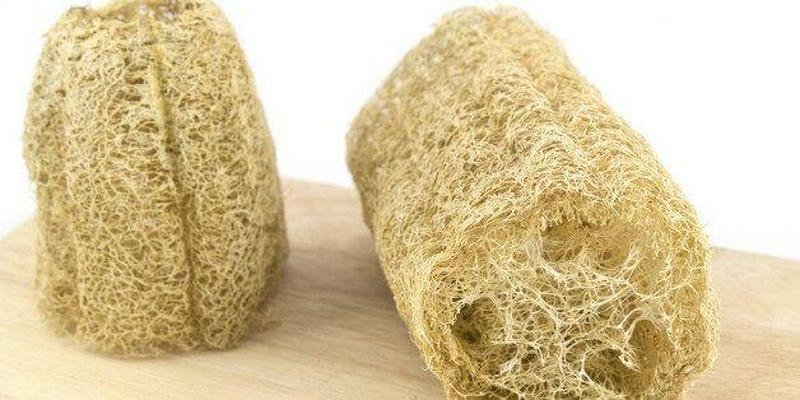Loofahs Are Actually Gourds? You Can Eat The 'Luffa' Plant Like A Cucumber
By | February 18, 2020
For once, advertising has lead us astray
If you've been scrubbing up with a loofah, not one of those things that you buy in the discount aisle that's made from an unknown synthetic substance but a real-deal natural loofah that stings just as much as it cleans, then you're in for a treat. No, really: You can munch down on it if you're feeling peckish. Don't act like you haven't thought about it.

Loofahs tend to be advertised as a product fished from the warm waters of the Indian Ocean in a similar manner as natural sponges, but they actually come from dried gourds. The white, webbed insides of these gourds get cleaned and all their goop discarded before they innocuously make their way to your shower. Yep, you've been bathing with that gross stuff that always made you cringe when you carved your Halloween pumpkins.
People have been using luffa plants forever

For generations, people across the globe have been making use of the Luffa aegyptiaca, the plant that's used to make loofahs, but you wouldn't recognize it as the exfoliation machine you see in stores. This spongy gourd doesn't grow white; instead, it's a deep green fruit that looks closer to a large cucumber. On the larger end, they can grow up to 18 inches. The plant grows naturally in India, but it's used commercially in China, Korea, Japan, and Central America. Many countries use the luffa as foodstuff; apparently, it has a flavor that's similar to summer squash. It should be eaten fresh, though, before it has a chance to grow its fibrous netting, so disregard what we said earlier about getting your shower grub on.
Everyone loves a luffa

The luffa plant is best eaten when it's about 4.5 inches long, way before it's ready to be peeled and its insides dried. Most people eat it like a cucumber, and in Vietnamese cuisine, it's used in soups and stir-fries to add crunch to the dish. Unlike a sponge, which a loofah definitely is not, these gourds have a ton of different uses and can be grown in a variety of climates. As long as you're not in Antarctica or something, you can grow one of these babies. However, they do have a long growing period, and according to people who grow them outside of their natural climate, they can be "easily frightened."
Get busy living or get busy drying (loofahs, that is)

Obviously, loofahs don't sprout out of the ground looking like the scratchy bath accessories that we all know and love. To get them to a state that you recognize takes a little work. First, the sponge and luffa gourds are plucked from a tree, peeled, and disinfected to get rid of any nasty fungus that you don't want to rub all over your skin. The porous sponges are then placed in sunlight to dry, after which you can use it however you want. We're not the bath police.
If you get your hands on a fresh luffa gourd and decide to make your own shower accessory, remember to save the seeds so you can grow your own luffa tree. You'll never have to spend money at Bed, Bath & Beyond again.
Loofahs can do more than clean your body

Aside from nourishing and exfoliating our bodies, these low-key gourds have a lot of interesting uses throughout the world. In Paraguay, which has been forested to death, hundreds of thousands of families have been left homeless thanks to a lack of building material. The luffa gourd has been a lifesaver for these people. Paraguayans combine it with various plant matter and recycled plastic to create panels for homes, furniture, air filters, packing material, marine steam engine filters, insulation, mattresses, and even stuffing for shoulder pads. Some people who enjoy this fruit have been known to juice it to treat jaundice. Keep that in mind the next time you're soaping up or peeping these scratchy accessories in the mall and feel a little yellow.

